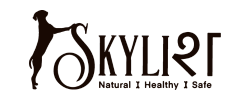Cooking for your dog feels like one of the purest acts of love. After all, what could be better than serving a fresh, home-prepared meal filled with care?
But here’s the uncomfortable truth: just because food is home-cooked doesn’t mean it’s healthy or balanced. In fact, without the right knowledge and precision, you may unintentionally be doing more harm than good.
Why Balance Matters in a Dog’s Diet
Dogs, like humans, need more than just calories to thrive. Their food must deliver the right balance of:
- Animal-based proteins
- Healthy fats
- Carbohydrates
- Fibre
When these proportions are off, the risks are real:
- Too many calories → Obesity and stress on vital organs
- Too few calories → Nutrient deficiencies
- Long-term imbalance → Weak immunity and chronic health issues
The challenge? These problems usually don’t show up immediately. They surface later, when it’s much harder to undo the damage.
The “Perfect Bowl” Problem
That bowl of meat, rice, veggies, oils, and seeds may look perfect. But ask yourself:
- Do you know how many calories (not grams) it actually adds up to?
- Are the protein, fat, carb, and fibre ratios correct?
- Is it aligned with your dog’s daily energy requirement?
If you’re not sure, it’s time to look at the science.
A Simple Way to Understand Dog Nutrition
Every dog has a daily energy requirement, measured in kilocalories (kcal). Two key terms matter here:
- RER (Resting Energy Requirement): The calories your dog needs at rest, without any activity.
- MER (Maintenance Energy Requirement): RER adjusted for activity, age, neuter status, and lifestyle. This is the number you should actually feed.
Think of it this way:
- Feeding above MER = Obesity
- Feeding below MER = Deficiencies
- Feeding an imbalanced diet long-term = A weak immune system
Knowing your dog’s MER is the foundation of balanced feeding.
The Supplementation Gap in Home Cooking
One of the biggest shortcomings of home-cooked dog food is supplements.
Social media is filled with advice about bone broths, seeds, mushroom powders, oils, and spices that supposedly work miracles. But here’s the catch:
- Without the right dosage, these can harm more than help.
- Some can interfere with medications or worsen existing conditions.
- Nutrient gaps often remain, even with “natural” add-ons.
That’s why scientifically formulated multivitamins and supplements, recommended by your vet, are a safer and more reliable option when you’re cooking at home.
How to do Home Cooking the Right Way
If you want to continue with home-cooked meals for your dog, here’s how to make sure you’re doing it safely:
- Assess your dog’s diet. Know their RER and MER.
- Track ingredients and calories. Weigh food portions and know their calories instead of guessing.
- Seek professional guidance. A qualified canine nutritionist or vet can help balance the diet.
- Be cautious with supplements. Stick to regulated, vet-approved options.
- Explore alternatives. Consider expert-formulated fresh meals, high-quality kibbles, or customized diet plans if daily balancing feels overwhelming.
The Bottom Line
Cooking for your dog is an act of love—but without accuracy and science, it can backfire. With the right knowledge, measurements, and professional guidance, your effort in the kitchen can truly nourish their long-term health.
And remember: everything above applies to healthy dogs. Managing clinical conditions through home-cooked diets requires a whole new level of expertise—one that must always be guided by a veterinary nutritionist. Or best, stick to prescription diets.
---------------------------------------------------------------------------------
Rachna, founder of Skylish, is a canine wellness guide grounded in science-based nutrition and fear-free dog care. She champions fresh feeding while supporting parents who choose commercial diets—always with the dog’s well-being at the core. Rachna also offers pro bono consultations, creating a safe, judgment-free space for pet parents to seek guidance and voice concerns.

